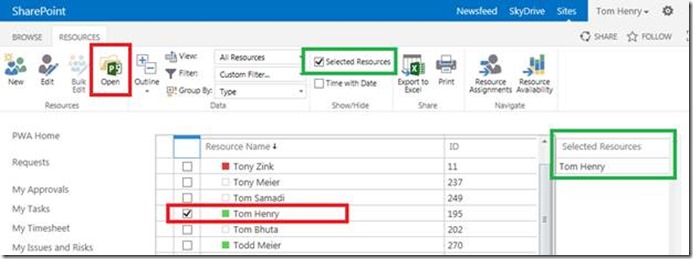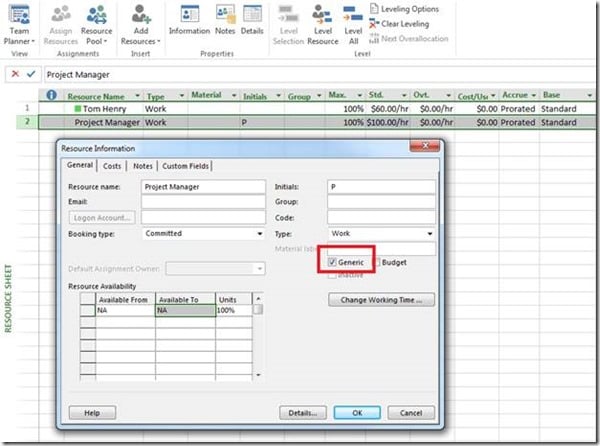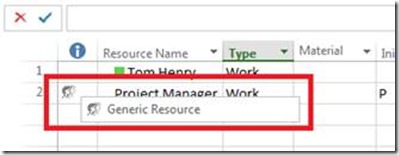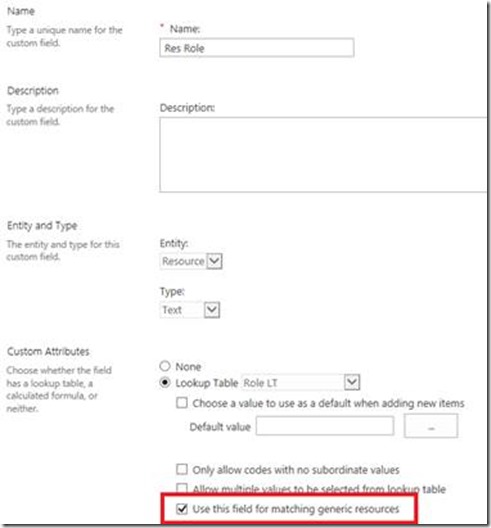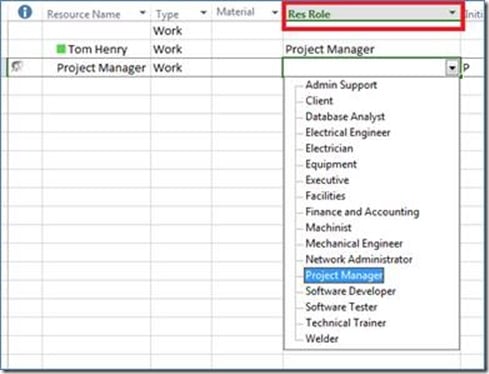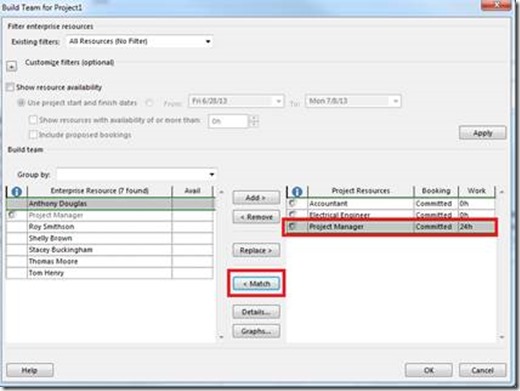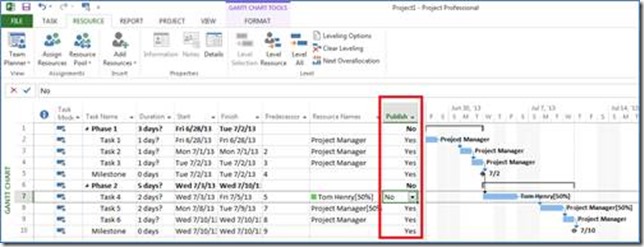I was fortunate enough to speak at the PMI conference in Houston recently, the topic I spoke about was ‘Wave Planning with Project Server’. I promise the attendees that I would write a follow up blog so here it is: What is Wave planning? Wave planning is a dynamic method of assigning resources that allows for uncertainty of future resource availability. In the real world, resources come and go and they move around within an organization making it impossible to know exactly who will be working on various activities within a project. This becomes harder on projects that are scheduled way out into the future. Wave planning allows you to build flexibility into your schedules by using placeholders or ‘generic resources’ as opposed to actual people during resource planning. Furthermore, by utilizing generic resources, Resource Managers also gain a better understanding of resource utilization enabling them to visualize the capacity of their project teams. Also, the scheduler is able to forecast costs for upcoming projects without getting into the semantics of individual resource availability. These costs can then be rolled up to the portfolio level which gives the executive stakeholders financial visibility across their portfolio spanning into the future. Named vs. Generic
| Named resources represent real / physical people or things i.e. Tom Henry, crane, conference room. |  |
| Generic resources represent individual resource types / roles i.e. Project Manager, Electrician |  |
How does Wave Planning work?
Typically a project manager will assign generic resources to tasks on their project schedule to which they do not know exactly who will be performing the work. Example: In a yearlong project, you may have 4 main phases. As phase 1 is starting in the next few days the project manager assigns ‘Named’ resources to the tasks within phase 1, as he/she has a good understanding of who will be doing the work. However for phases 2 through 4; he/she assigns ‘Generic’ resources as he/she does not know who will be performing the work but he/she does know the types of resources needed to complete the task such as; ‘Software Engineer’ or ‘Senior Technician’. As Phase 1 is drawing to a close, the Project Manager starts investigating which resources are available to work on the phase 2 tasks. Project Server has a tool in place called ‘Resource Matching’ that allows a Project manager to select a ‘generic’ resource and search for a ‘Named’ resource that has the same ‘Skill’. That resource can then be added to the project team or you could replace the generic resource on the project team for the named resource. However, by replacing the generic resource for the named resource, you will replace every assignment in the schedule. The Project Manager also has the ability to control when assignments are published to Team Members. This is helpful when a Project Manager is not exactly sure which named resources will perform certain tasks but he/she wants to do some what-if analysis using named resources and doesn’t want to keep updating the assignments until he/she is satisfied with the schedule.
Setting up a Project Server environment to facilitate Wave Planning. Creating generic resources Note:
if you’re not a Project Server Administrator you may need to have the Administrator create the Enterprise resources on the server. Navigate to the ‘Resource Center’. Check the checkbox next to the resource name of one or more resources then, click the ‘Open’ button in the ‘Resources’ section of the ‘Resources’ Ribbon. This will check out the resource(s) for editing in Project Professional. Tip: If you check the ‘Selected Resources’ checkbox you will be able to see which resources have been selected on the right hand side of the screen, this can help as it is sometimes difficult to see exactly which resources have been selected. (See green highlighting below).
Microsoft Project Professional will launch. Add the name of the Generic resource that you would like to add just as you would a ‘named’ resource, fill out the rest of the Information, such as rate, in the same way. In the example below I have named my to-be generic resource ‘Project Manager’. To convert the resource to a generic resource click on ‘Information’ in the ‘Properties’ section of the ‘Resource’ ribbon. The ‘Resource Information’ dialogue box will appear. Check the ‘Generic’ Check box then click ‘OK’.
In the Indicators column you will now see the ‘Generic’ indicator
Click ‘Save’ and close the project and your resources will be saved up to the server.
Setting up Resource Matching If you want to use ‘Resource Matching’ which allows a project manager to swap out generic resources for named resources with a similar skill you will need to create a resource level custom field on the server such as ‘Res Role’ and set the field up for ‘Matching Generic Resources’ Note: Usually when I’m setting up generic resources I use the names of all my generic resources to populate the ‘Res Role’ lookup table or visa-versa.
Once you have the custom field in place you will need to assign the ‘Res Role’ to each resource (named and generic) in your Enterprise resource pool.
Using the Resource Matching feature Now that you have generic resources and resource matching setup use ‘Build a team’ to swap out a Generic resource for a named resource, click on the resource on the right hand side then click the ‘Match’ button. The Enterprise resource list on the left hand side will be filtered to display only the resources that have the same ‘Res Skill’ at the Project Manager generic resource. You can then add the named resource to your project team.
When it comes to replacing the resources on tasks you may have made detailed assignments i.e. assigning a generic resource at 50% units. It is therefore important that when you replace a resource you use the ‘Assign Resources’ dialogue. For more information on that see my other blog on Assigning Resources. Using the Publish Feature to control visibility of assignments Once you have replaced the generic resources for named resources, when you publish these assignments will be sent out to the resources. However, it is possible to stop these assignments from being published by setting the ‘Publish’ field for each task to ‘No’. Once you’re ready to inform your resources of their assignments you can change the publish field to ‘Yes’.
So as you can see there are various tools in place within Project Server that help the Project Manager to adopt a ‘Wave Planning’ approach.
Please let me know if you have any questions.

